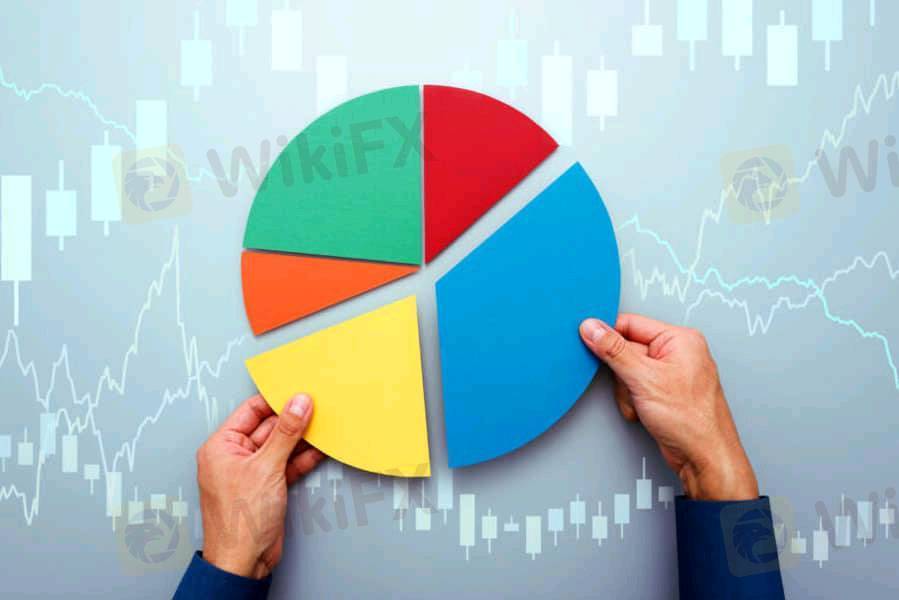
2025-01-30 03:19
ОтраслевойCross-pair analysis for better trade opportunities
#firstdealofthenewyearchewbacca#
Cross-Pair Analysis for Better Trade Opportunities
Cross-pair analysis involves examining the price action, correlations, and divergences between different currency pairs to identify better trade opportunities. Here’s how you can use it effectively:
---
1. Understanding Cross-Pairs
Cross-pairs are currency pairs that do not include the U.S. dollar (e.g., EUR/GBP, AUD/JPY, GBP/CHF). Analyzing these pairs can help you:
Diversify trading strategies.
Spot relative strength/weakness between currencies.
Find better risk-reward opportunities outside major USD pairs.
---
2. Correlation Analysis
Currencies often move in relation to each other. Key correlations include:
Positive Correlation: Pairs moving in the same direction (e.g., EUR/USD and GBP/USD).
Negative Correlation: Pairs moving in opposite directions (e.g., EUR/USD and USD/CHF).
How to Use Correlations for Trading
If EUR/USD is bullish and USD/CHF is bearish, EUR/CHF may have a strong bullish trend.
If AUD/USD and NZD/USD are moving together but AUD/NZD diverges, it may signal an opportunity in AUD/NZD.
---
3. Strength & Weakness Analysis
By comparing different cross-pairs, you can determine which currency is strong or weak.
Example:
If GBP/USD is rising and EUR/USD is falling, GBP is stronger than EUR.
This could indicate a good opportunity in EUR/GBP short.
Practical Tools for Strength Analysis
Currency strength meters
Relative performance of different currency pairs
---
4. Divergence Trading with Cross-Pairs
Sometimes, two highly correlated pairs move in opposite directions. This divergence can signal a trading opportunity.
Example:
EUR/USD and GBP/USD usually move together. If EUR/USD breaks higher, but GBP/USD lags, it might indicate a pending GBP/USD breakout.
---
5. Arbitrage & Triangular Relationships
Triangular arbitrage involves analyzing three related pairs to find discrepancies.
Example:
If EUR/USD is strong and GBP/USD is weak, EUR/GBP should be rising. If it’s not, there might be an arbitrage opportunity.
---
6. Using Technical Analysis on Cross-Pairs
Since cross-pairs often trend more smoothly than USD pairs, technical analysis can be more effective. Useful indicators include:
Moving Averages (for trend identification)
RSI & MACD (for momentum shifts)
Support & Resistance (for trade entry/exit points)
---
Final Thoughts
Cross-pair analysis helps traders:
✔ Identify stronger trade setups with better risk-reward.
✔ Avoid unnecessary exposure to USD volatility.
✔ Use intermarket relationships to refine trade entries.
Нравится 0
bossbaby6527
交易者
Популярные обсуждения
Технический показатель
Розыгрыш Xiaomi Redmi Note 9 и 20-и VIP-подписок
Технический показатель
ВЫСКАЗЫВАНИЯ БАЙДЕНА ДАВЯТ НА ВАЛЮТЫ РАЗВИВАЮЩИХСЯ СТРАН
Технический показатель
Европа заключила совместный контракт на поставку ремдесивира для лечения COVID-19...
Анализ котировок
Китай: Индекс деловой актив. в сф. услуг Caixin PMI, Сентябрь, 54,8 п.
Технический показатель
Индия: Решение Резерв. Банка Индии по проц. ставке, 4%, ожидалось 4%...
Технический показатель
События предстоящего дня: "АЛРОСА" опубликует результаты продаж за сентябрь...
Классификация рынка

Платфоома

Выставка

Агент

Вакансии

EA

Отраслевой

Котировки

Показатель
Cross-pair analysis for better trade opportunities
 Нигерия | 2025-01-30 03:19
Нигерия | 2025-01-30 03:19#firstdealofthenewyearchewbacca#
Cross-Pair Analysis for Better Trade Opportunities
Cross-pair analysis involves examining the price action, correlations, and divergences between different currency pairs to identify better trade opportunities. Here’s how you can use it effectively:
---
1. Understanding Cross-Pairs
Cross-pairs are currency pairs that do not include the U.S. dollar (e.g., EUR/GBP, AUD/JPY, GBP/CHF). Analyzing these pairs can help you:
Diversify trading strategies.
Spot relative strength/weakness between currencies.
Find better risk-reward opportunities outside major USD pairs.
---
2. Correlation Analysis
Currencies often move in relation to each other. Key correlations include:
Positive Correlation: Pairs moving in the same direction (e.g., EUR/USD and GBP/USD).
Negative Correlation: Pairs moving in opposite directions (e.g., EUR/USD and USD/CHF).
How to Use Correlations for Trading
If EUR/USD is bullish and USD/CHF is bearish, EUR/CHF may have a strong bullish trend.
If AUD/USD and NZD/USD are moving together but AUD/NZD diverges, it may signal an opportunity in AUD/NZD.
---
3. Strength & Weakness Analysis
By comparing different cross-pairs, you can determine which currency is strong or weak.
Example:
If GBP/USD is rising and EUR/USD is falling, GBP is stronger than EUR.
This could indicate a good opportunity in EUR/GBP short.
Practical Tools for Strength Analysis
Currency strength meters
Relative performance of different currency pairs
---
4. Divergence Trading with Cross-Pairs
Sometimes, two highly correlated pairs move in opposite directions. This divergence can signal a trading opportunity.
Example:
EUR/USD and GBP/USD usually move together. If EUR/USD breaks higher, but GBP/USD lags, it might indicate a pending GBP/USD breakout.
---
5. Arbitrage & Triangular Relationships
Triangular arbitrage involves analyzing three related pairs to find discrepancies.
Example:
If EUR/USD is strong and GBP/USD is weak, EUR/GBP should be rising. If it’s not, there might be an arbitrage opportunity.
---
6. Using Technical Analysis on Cross-Pairs
Since cross-pairs often trend more smoothly than USD pairs, technical analysis can be more effective. Useful indicators include:
Moving Averages (for trend identification)
RSI & MACD (for momentum shifts)
Support & Resistance (for trade entry/exit points)
---
Final Thoughts
Cross-pair analysis helps traders:
✔ Identify stronger trade setups with better risk-reward.
✔ Avoid unnecessary exposure to USD volatility.
✔ Use intermarket relationships to refine trade entries.
Нравится 0
Я тоже хочу высказать замечания.
Задать вопрос
0Комментарии

Пока нет комментариев, оставьте комментарий первым

Задать вопрос
Пока нет комментариев, оставьте комментарий первым